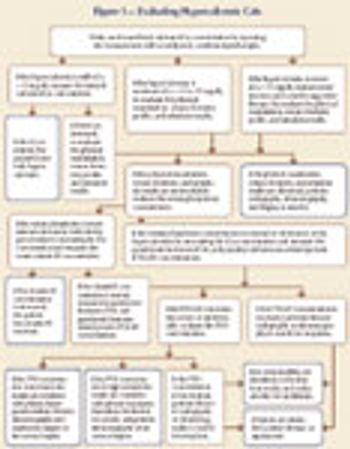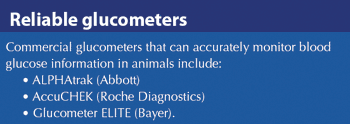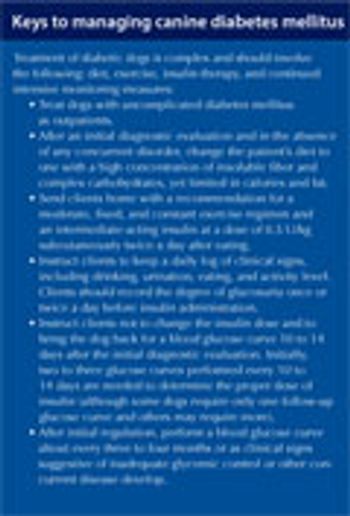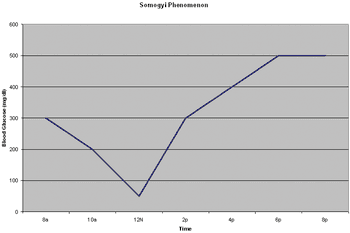
Polyuria and polydipsia refer to excessive water consumption and urine production respectively. These are common clinical signs in both dogs and cats.

Polyuria and polydipsia refer to excessive water consumption and urine production respectively. These are common clinical signs in both dogs and cats.

An outline of the pathophysiology, diagnosis, and treatment of hypoadrenocorticism in dogs.

Cushing's syndrome refers to all causes of hyperadrenocorticism.

Hyperadrenocorticism develops most commonly in middle-aged to older cats (mean age = 10.4 years; range 6 - 15 years).

Diabetes mellitus is a common endocrine disorder in dogs and cats. Recent data has shed light on the pathogenesis of the disorder in cats and has highlighted the role of diet and oral hypoglycemic therapy.

In the last few years it is still apparent that the best test to use in the initial approach to the patient with hyperthyroidism is measurement of total T4 concentrations.

A review of the classic signs of hyperthyroidism, the best testing strategies and when to use them, and the advantages and disadvantages of surgical and non-surgical therapies.

Hyperadrenocorticism remains one of the most common endocrine disorders diagnosed in the geriatric dog population.

Diabetes mellitus is a common endocrine disorder in dogs and cats.

In the last few years it is still apparent that the best test to use in the initial approach to the patient with hyperthyroidism is measurement of total T4 (TT4) concentrations.

Cushing's syndrome refers to all causes of hyperadrenocorticism with overproduction of cortisol.

Hyperthyroidism is the most common endocrine disorder in the cat.

Overview of canine hypoadrenocorticism

Polyuria and polydipsia (PU/PD) refer to excessive water consumption and urine production respectively.

Hyperadrenocorticism develops most commonly in middle-aged to older cats (mean age = 10.4 years; range 6 - 15 years).

Review the steps to evaluating a hypercalcemic cat.

Proven to deliver consistent, quality results, Soloxine tablets are the historic gold standard for canine hypothyroidism therapy and the preferred treatment for thyroid hormone supplementation.

This review will help you better recognize and treat affected patients.

Advances in endocrinology are happening quickly, and four areas in particular merit our attention to ensure we are keeping up-to-date and providing the best care for our patients.

Vetsulin (porcine insulin zinc suspension) is the first FDA-approved veterinary product indicated for the reduction of hypersglycemia and hyperglycemia-associated clinical signs in dogs with diabetes mellutis.

Monitoring the effectiveness of therapy is an important part of managing canine diabetes. The time and effort the veterinarian devotes to client education will imporve the client's ability to accurately relate what is observed at home and to monitor the dog according to the veterinarian's instructions-both of which facilitate the veterinarian's ability to assess the long-term efficacy of treatment.

Articles on managing and treating canine diabetes mellitus.

Diabetes mellitus is a complex disease, and managing it is equally complex. Communicating clearly with clients and preparing them for the need to monitor and modify treatment is vital for successfully treating a diabetic dog.

In the case of a chronic disease such as canine diabetes, we have to do an excellent job of handling clients' concerns, or it may be the owners' misperceptions about canine diabetes rather than the diabetes itsels that results in the loss of a patient. David Bruyette, DVM, DACVIM, has developed a trouble-shooting top 10 list to help assure owners of newly diagnosed dogs that it's going to be OK.

The basal T4 concentration is useful in most cases.